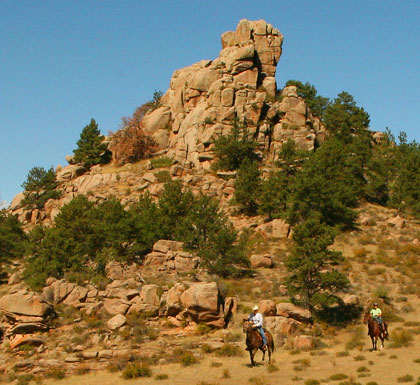 When considering saddle fit and the seasonal rider you need to keep a few things in mind to get the big picture. A horse’s seasonal weight loss and gain due to conditioning and periods of inactivity can be a major concern for some riders and not affect others. If the rider is a weekend warrior who only rides once or twice a week for an hour or two and only walks the horse the entire time, the horse is not going to show drastic changes in weight and conditioning. This is fairly predictable because even during the time of year where the horse is being ridden, he’s not being ridden hard enough to make a difference.
When considering saddle fit and the seasonal rider you need to keep a few things in mind to get the big picture. A horse’s seasonal weight loss and gain due to conditioning and periods of inactivity can be a major concern for some riders and not affect others. If the rider is a weekend warrior who only rides once or twice a week for an hour or two and only walks the horse the entire time, the horse is not going to show drastic changes in weight and conditioning. This is fairly predictable because even during the time of year where the horse is being ridden, he’s not being ridden hard enough to make a difference.
Contrast that rider with one who lays their horse off all winter but then is riding 20 to 100 miles a week all summer and mostly trots and canters, where seasonal weight loss and gain could be more than 100 lbs. and now we have a different story.
As a horse gets into better shape, fat disappears and leaner muscles develop. If we fit the horse when he is out of shape then as the horse becomes more fit, the saddles fit is going to be loose. If we fit the horse when he is in good shape and then lay the horse off for the winter, the saddle is going to be too tight when he is ridden again in spring. Sounds like we need two saddles – maybe yes – maybe not.
Most people can get away with having the saddle fit when the horse is a bit out of shape and bulked up with fat and then as the horse becomes leaner and more fit by adding a thicker pad to fill in space. There will come a point however where a horse’s back changes so much that you end up with a horse with a sore back. The heavier the rider and the more that is demanded of the horse, the sooner you will see trouble.
